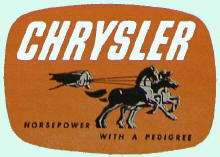| Chrysler Air Raid Siren - History | |
|
Improved Model Introduced The improved and final production version of the Chrysler Air Raid Siren was introduced in 1952, the same year that Chrysler opened the Trenton, Michigan plant and only a year after Chrysler first introduced the 331cubic inch displacement HEMI®-Head engine. The operator seat that had appeared on the earlier sirens was gone and the siren operator's panel moved to the right side of the engine cowling. This newest of the Chrysler Sirens used their new 180 HP V-8 HEMI®-Head industrial gasoline engine and three-stage blower and was specifically designed for remote control. [ Photographs of the Cold War Era Chrysler Air Raid Siren ]
The Federal Civil Defense Act of 1950 began a reorganization of civil defense at all levels of government. The sale of monster Chrysler sirens was indirectly encouraged by the government, who mandated public warning systems and drills. One giant siren could provide the required warning to a population that might otherwise require a hundred smaller electric sirens. The manufacture of the Chrysler Air Raid Siren was discontinued in 1957. These siren were heavy-duty workhorses however and they remained in regular service into the 1970's. The VictorySiren™ is one of these improved model Chrysler Air Raid
Sirens. |
|
Copyright 2003,
VictorySiren Foundation, Inc.

